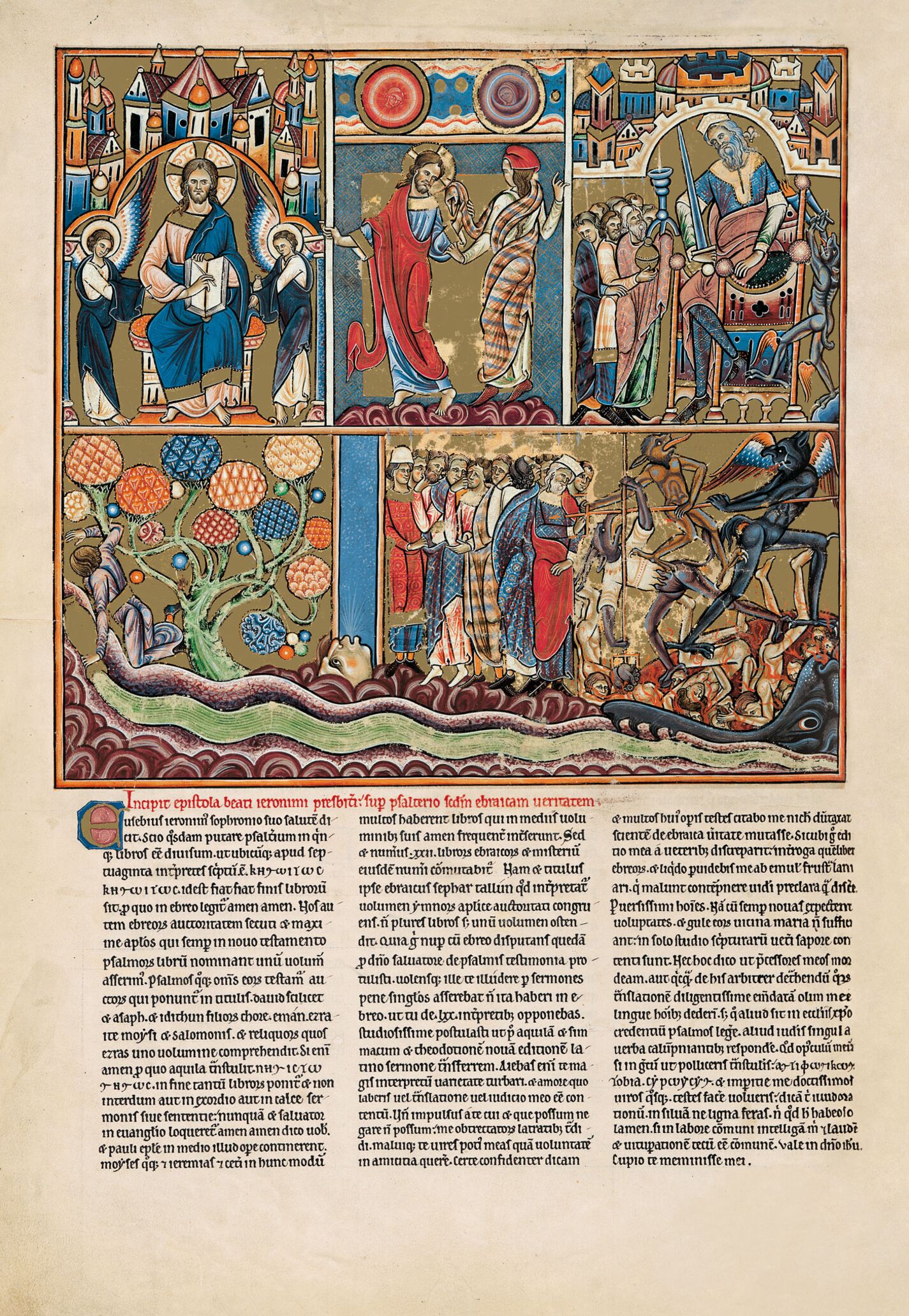The illustration of this psalm shows the way of the good man, who is rewarded, and the way of the wicked, who are punished. Under a trefoil arch, Christ sits between two angels showing the book of the law and pointing to its text with a quill, to instruct the “man who has not walked in the counsel of the ungodly” (v. 2, Sed in lege Domini voluntas eius // But his will is in the law of the Lord). In the top centre, below personifications of the sun and moon, Christ points towards the showing of the book of the law (v. 2, in lege eius meditabitur die ac nocte // on his law he shall meditate day and night), while pulling the man by his cloak away from the way of the wicked. On the right is what the man should avoid, the way of sinners and the chair of pestilence (v. 1, Beatus vir qui non abiit in consilio impiorum et in via peccatorum non stetit et in cathedra pestilentie non sedit // Blessed is the man who has not walked in the counsel of the ungodly, nor stood in the way of sinners, nor sat in the chair of pestilence). The chair of pestilence is represented by a ruler figure seated on a throne and holding a sword, with a devil inspiring him behind the throne. A group of men stand before him offering gifts to the ruler. The bottom half of this illustration has a river god holding a vessel from which a stream flows beside a tree with fruit (v. 3, Et erit tanquam lignum quod plantatum est secus decursus aquarum quod fructum suum dabit in tempore suo // And he shall be like a tree which is planted near the running waters, which shall bring forth its fruit in due season). In the centre, a large head blows dust into the air, symbolising the driving away of the wicked (v. 4, Non sic impii: non sic, sed tanquam pulvis quem proicit ventus a facie terre // Not so the wicked, not so, but like the dust which the wind driveth from the face of the earth). On the right, a group of wicked men are being dragged by devils into the flames of the mouth of hell (v. 6, et iter impiorum peribit // the way of the wicked shall perish); three naked men are falling head downwards into hell (v. 5, non resurgunt impii in iudicio // the wicked shall not rise again in judgement).
